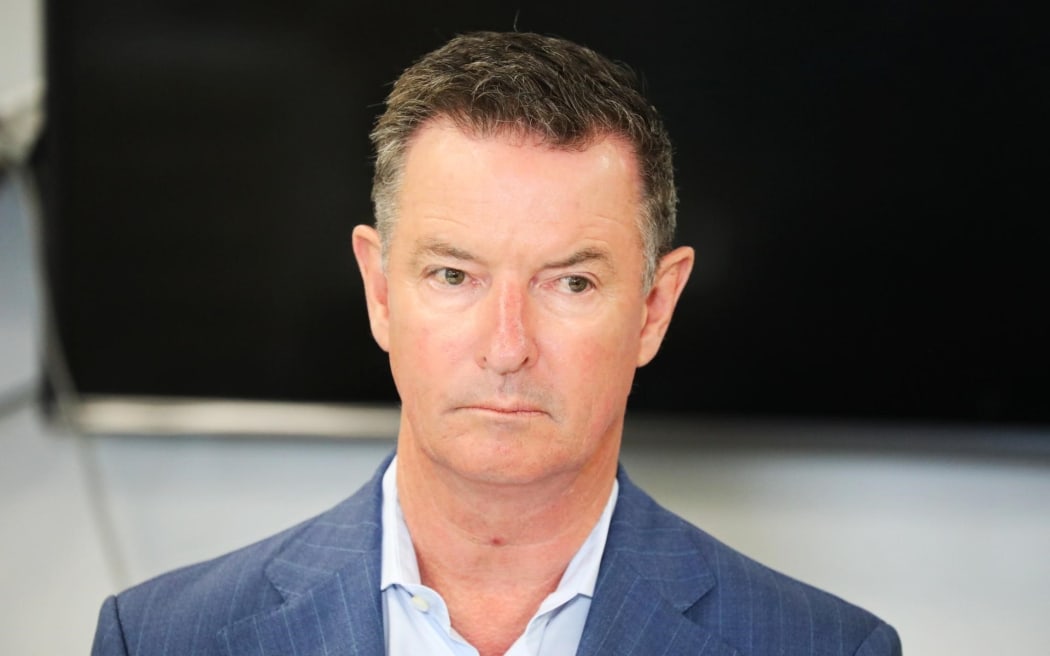
Former Ports of Auckland chief executive Anthony (Tony) Gibson. Photo: RNZ / Nick Munro
A maritime expert says the former boss of Ports of Auckland did not properly consult with workers on changes which could affect health and safety in the lead-up to the death of a worker.
Former chief executive Anthony (Tony) Gibson is facing two charges laid by Maritime NZ.
The maritime regulator accuses Gibson of failing to use his influence as chief executive in 2020 to guide the company in a direction away from its health and safety problems before the death of Pala'amo Kalati that year.
Kalati died after being crushed by a shipping container in 2020.
The charges carry a combined maximum penalty of a $400,000 fine.
Maritime NZ argued Gibson made decisions which jeopardised the safety of port workers.
Expert witness John Riding, a consultant for Marico Marine, said this included giving lashing responsibilities to dock workers who were already busy with other tasks.
During his second day of giving evidence at Auckland District Court, Riding said management had not properly consulted with staff.
"After whatever was used to develop this first run of the plan, it needed to then be allowed to be challenged by other parts of the organisation. Getting negative feedback is actually a very healthy thing," he said.
"Recognising you're going to have disparaging views, but those views become a very, very powerful and useful information response. You would have had lashers and crane drivers with quite a lot of experience [who could give feedback]."
Though expert staff were invited to initial meetings developing the plan, they were not given an opportunity to challenge the end result, Riding said.
"I would have wanted to see a challenge process, [on] the other side," he said.
"There is the wider body of professional people in the organisation who were only going to find out later via a briefing. It had already been decided."
Port workers were given too many competing responsibilities during the pandemic, he said.
"There is a need for the person directing the crane to have an unfettered and clear view directing the crane, which would have then lead me to [wonder] how on earth can they can manage lashes while also discharging that role.
"My understanding is that Ports of Auckland Limited didn't fully understand or value the lashing role. Lashing is an activity in the port that is unlikely ever to be automated, and therefore the system supporting the people doing that activity needs to be robust."
Gibson, as chief executive, was responsible for the impacts of those decisions, Riding said.
"The CEO had an awful lot to deal with [during Covid-19], I can accept that," he said.
"[But] there's a need for the person at the top to stop a while [and consider] what has been done to evaluate this plan."
But Riding also acknowledged the health and safety team at Ports of Auckland had grown during Gibson's time as chief executive.
"Under Mr Gibson's tenure, it went from one [health and safety staffer] to 16, [and that was] a tremendously beneficial change," he said.
The judge-alone trial is expected to last several weeks.


